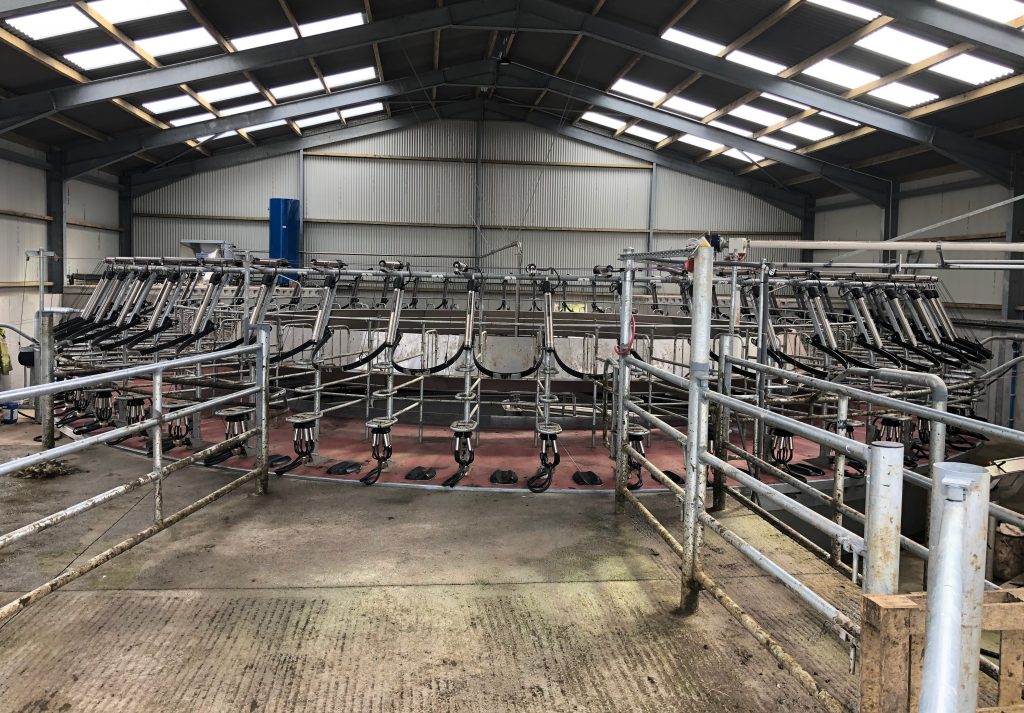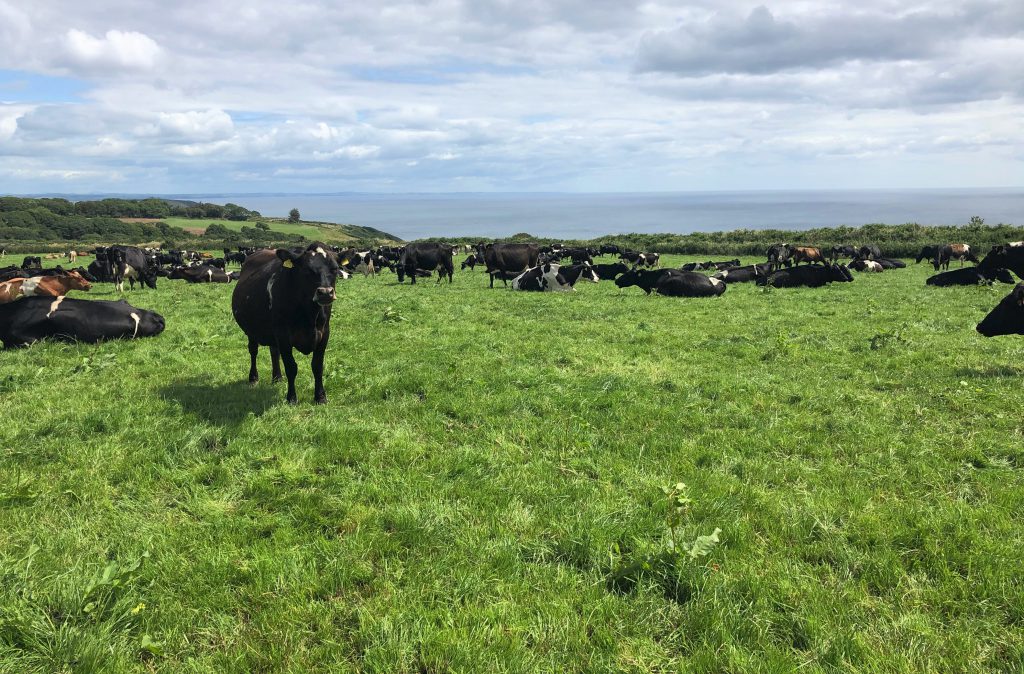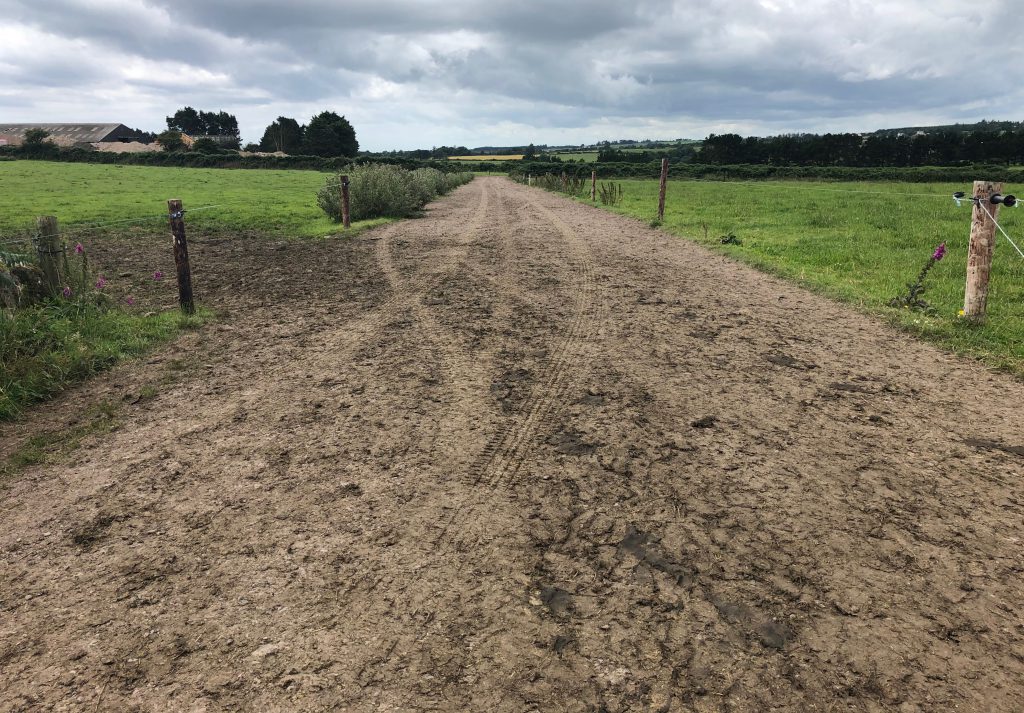Olympic walker Jamie Costin has swapped the runners for the wellies after returning home and taking over the family dairy farm in Ring, in Co. Waterford.
Back in 2012, after failing to make the team for the London Olympics, Jamie decided it was time for him to retire and came back home to take the reins over from his father, Jim.
In 2015, the farm entered expansion mode and since then cow numbers have increased from 150 cows to today milking 360 cows with the land base also growing from 45ha to a milking platform of 145ha today.
Jamie not only retired from walking in the Olympics, but he has also recently retired from walking up and down their 24-unit herringbone parlour.
Just last month, a 54-bale Waikato rotary parlour was installed on the farm. Previously, the milking was taking over three hours every morning and evening to complete, but they can now comfortably complete the milking in an hour tops.
Infrastructure
While cow numbers have been increasing over the years, the farm’s infrastructure has been a working progress for Jamie.
“I wanted to make sure I had all my research done and was ready before I started investing in the farmyard.
“I thought about expanding the existing parlour; but, I wanted one person to be able to milk the cows by themselves.
“So, I began researching rotaries. I felt the only way I was going to learn about rotaries was to go and milk in them myself.
“As soon as I was finished milking here in the morning, I would go off to a farm that had one. The efficiency of the rotary parlour was what impressed me most; in under an hour 300 cows could be milked and on their way back to their paddock,” explained Jamie.
Explaining a further reason for choosing a rotary, he said: “I wanted a simple system, so that if you had someone working for you they can walk in at any stage and easily milk the cows by themselves.”
The new parlour includes automatic teat sprayers, automatic cluster removers (ACRs), feeders and retention bars.
The parlour also has an automatic drafting system, a collecting yard flood-wash system along with a 30,000L milk tank. The collecting yard to the back of the parlour is capable of holding 450 cows.
Touching on the movement from the herringbone to the rotary, he said: “The first morning they bet us; as in it took four hours to milk 180 cows.
“Although that evening we milked them all in three hours, the following morning in two hours and by the fourth milking we were down to an hour and half.”
Along with the construction of the rotary an additional 300-topless cubicles – leading into a new 250,000 gallon concrete lagoon – are being installed next to the existing 120-indoor cubicles.
“The reason we went with the concrete lagoon was because where the cubicles are now, we knew we were going to hit rock and it was working out as the cheapest option by far when I went looking,” he added.
Cow type
The herd is a relatively young herd due to the expansion of the herd over the last few years. The average lactation number of the herd is 2.7 lactations.
Last year, the herd produced 411kg of MS/cow – at an average fat of 4.6% and protein of 3.9%.
It is made up of predominately crossbred cows with an average EBI of €163. Jamie’s criteria for his cows is simple.
“I am chasing an animal that can do all this walking, produce kilograms of milk solids and go in calf every year. The most efficient cow I have is only 480kg and has been continuously producing over 600kg of MS for the last five years.
“We have been weighing the cows for the last three or four year as part of my discussion group. Basically, we look at the weight to kilogram of milk solid ratio.
“I have a cow there that is 450kg doing 560kg of milk solids for the last four or five years; so she is producing 1.2kg of milk solids for every kilogram of body weight.
“Last year, our average body weight was 508kg; I suppose I would like to get down to 480kg. The ideal situation would be to produce 500kg of MS from 500kg of meal with a cow this size,” explained Jamie.
Breeding
This year’s breeding season has gone very well for Jamie. More than 90% of the cows were submitted in the first three-weeks of AI and he expects conception rates will be high.
Touching on his breeding strategy, he said: “We do voluntary culling of the worst cows before we start breeding. I give them three lactations and then anything that is 10% lower than the herd average has to go.
That way you’re only breeding off your best cows. It has worked for us because we have gone from 287kg of MS/cow to 411kg of MS/cow last year – feeding on average 250kg of meal/cow.
“Once the herd matures I don’t see why we couldn’t get this up to 450kg of MS/cow,” he added.
Continuing, he said: “Our breeding season is nine weeks and six days long. We AI for six weeks and then let the bulls out. My contract rearer is my AI technician so he takes care of breeding all my heifers. Last year, we had an 81% conception rate to first service on the heifers.
“When I’m selecting bulls all the big cows get Jersey and then everything else gets daughter proven kiwi cross. I used to chase EBI but I have gone away from it now.”
Grassland management
The inclusion of grass in his herd’s diet is hugely important to Jamie and he strives to achieve the maximum number of days at grass that he can.
“Grass growth this year couldn’t have been better; we have been getting rain just at the right time, every time,” said Jamie.
“We begin calving on February 1 and they go straight out to grass. When I came home the first thing I focused on was making the whole farm easily accessible to graze.
“I began investing in farm roadways because some of the paddocks were very difficult to access.
“I swapped land with one farmer and made a roadway through the land. Before, we would have had to walk around the road and it would have taken a lot longer,” explained Jamie.
The new rotary is at the centre of the farm with farm roadways going a mile in three different directions.
“We are stocked at 2.5cows/ha over the whole grazing platform. What you see here is what we have – we don’t have any outside blocks.
“The first few years after I came back I was kind of naive and I would just taken one big cut of silage in May or June. Until a buddy of mine asked ‘are you not taking a bit of a risk?’: so ever since then I split the silage into two cuts.
“Now, I take 90ac on May 20 and another 40-50ac on June 10. The silage fields are grazed once in the spring and then cut in May and then everything cut in June would have been grazed twice,” concluded Jamie.






